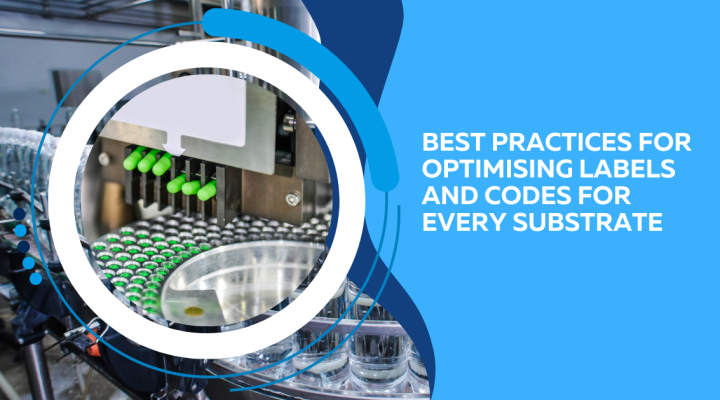
In industries like food, beverage, pharmaceuticals, and brewing, labelling and coding go far beyond simply sticking a label on a product. Accurate, durable, and compliant labels are essential for efficiency, traceability, and brand reputation.
Every substrate - glass, plastic, metal, or cardboard - behaves differently, so knowing how to optimise your labelling process is critical. In this guide, we’ll walk through industrial labelling best practices to help your codes and labels perform reliably, no matter the material.
The first step in any labelling or coding process is understanding the surface you’re working with. Substrate choice affects ink adhesion, label durability, and overall print quality.
Always test inks and labels on the actual production substrate. Lab tests or samples might not reveal real-world challenges.
There’s no one-size-fits-all solution. Choosing the right coding or labelling technology depends on line speed, regulatory requirements, and the substrate itself.
Test your chosen technology in real production conditions to ensure consistent quality.
Even the most advanced printer or labelling machine won’t deliver if the ink or adhesive isn’t compatible with your substrate.
Inks: Choose formulations designed for your specific material. Solvent-based for plastics, UV-curable for coated surfaces, or pigment-based for paper
Adhesives: Permanent adhesives for long-term packaging, removable options for returnable containers or bottles
Run tests under real production and storage conditions to ensure adhesion and legibility throughout the product’s lifecycle.
Proper equipment setup and maintenance are essential for consistent labelling and coding.
Small adjustments on the production line can prevent big issues down the road.
Regulated industries like food, beverage, and pharma demand labels that comply with standards such as GS1, FDA, or EU FMD.
Machine-readable codes, such as barcodes, QR codes, or Data Matrix, are critical for traceability throughout the supply chain.
Use automated vision systems to regularly check code readability and ensure compliance at every stage.
Working with an experienced coding and labelling supplier can save time, reduce errors, and improve production efficiency. They can help select the right technology, test inks and adhesives, and ensure seamless integration with your production line.
Don’t just buy equipment - look for partners who understand your industry and can provide ongoing support.
Labelling and coding might seem straightforward, but getting it wrong can lead to costly mistakes, compliance issues, and damaged brand reputation. By following these industrial labelling best practices, you’ll ensure every label and code sticks, remains readable, and survives the journey from production line to customer.
Whether you’re dealing with glass bottles, plastic containers, metal cans, or cardboard boxes, investing in proper processes, testing, and technology pays off in reliability and efficiency.
Contact us today for help and guidance.